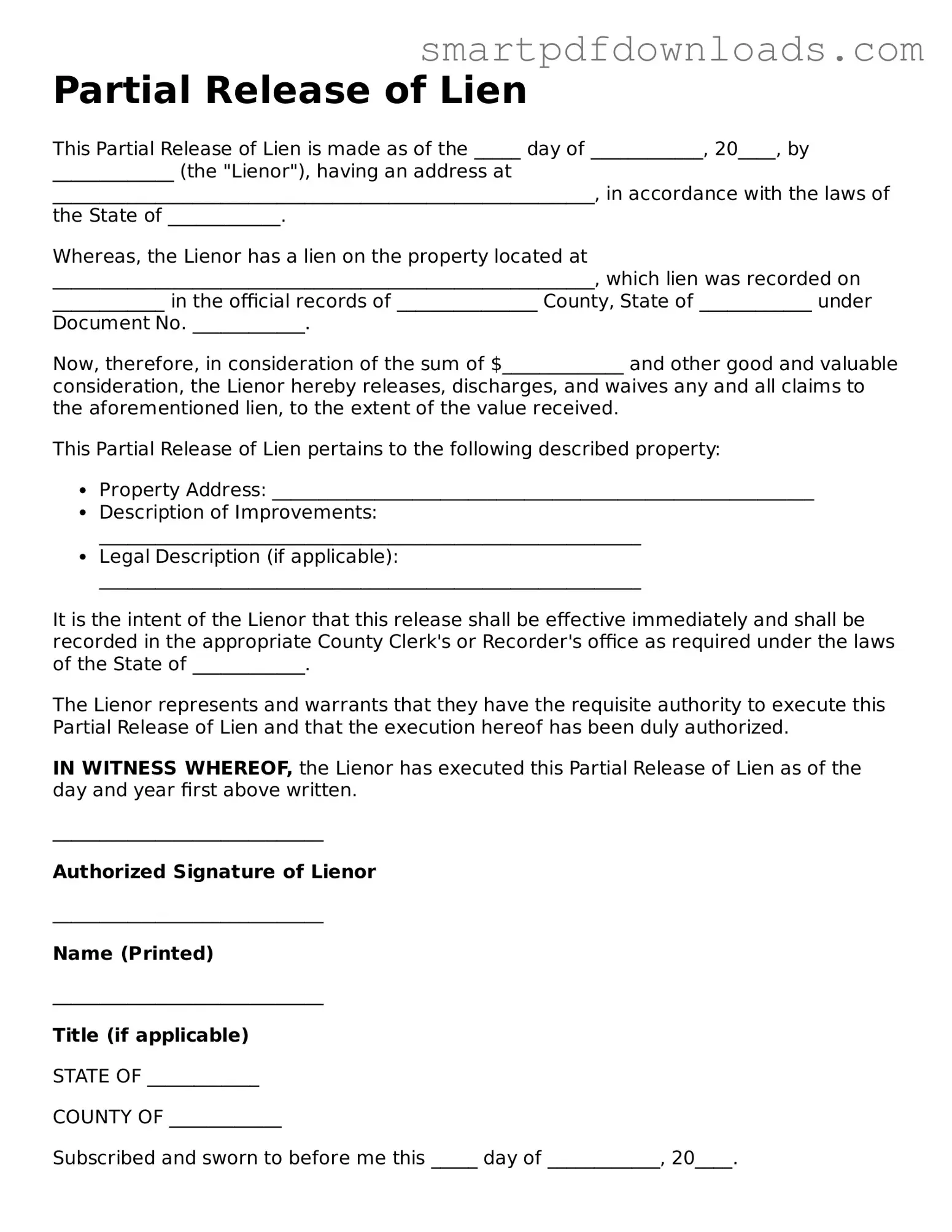Partial Release of Lien
This Partial Release of Lien is made as of the _____ day of ____________, 20____, by _____________ (the "Lienor"), having an address at __________________________________________________________, in accordance with the laws of the State of ____________.
Whereas, the Lienor has a lien on the property located at __________________________________________________________, which lien was recorded on ____________ in the official records of _______________ County, State of ____________ under Document No. ____________.
Now, therefore, in consideration of the sum of $_____________ and other good and valuable consideration, the Lienor hereby releases, discharges, and waives any and all claims to the aforementioned lien, to the extent of the value received.
This Partial Release of Lien pertains to the following described property:
- Property Address: __________________________________________________________
- Description of Improvements: __________________________________________________________
- Legal Description (if applicable): __________________________________________________________
It is the intent of the Lienor that this release shall be effective immediately and shall be recorded in the appropriate County Clerk's or Recorder's office as required under the laws of the State of ____________.
The Lienor represents and warrants that they have the requisite authority to execute this Partial Release of Lien and that the execution hereof has been duly authorized.
IN WITNESS WHEREOF, the Lienor has executed this Partial Release of Lien as of the day and year first above written.
_____________________________
Authorized Signature of Lienor
_____________________________
Name (Printed)
_____________________________
Title (if applicable)
STATE OF ____________
COUNTY OF ____________
Subscribed and sworn to before me this _____ day of ____________, 20____.
_____________________________
Notary Public
My Commission Expires: ________________
